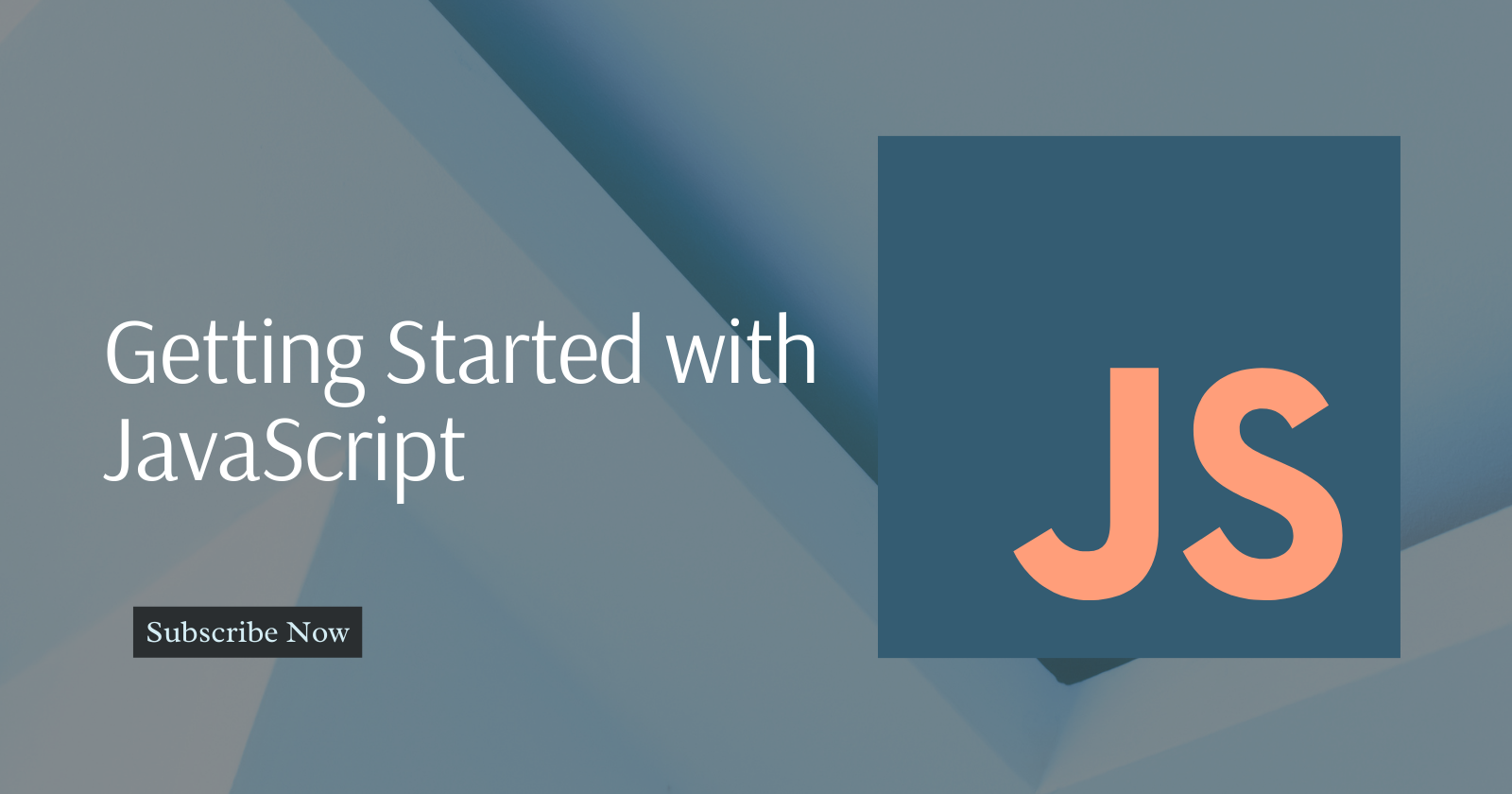Getting Started with JavaScript: A Beginner's Guide
 Fanny Nyayic
Fanny Nyayic
JavaScript is a versatile and essential programming language for web development. It's the language that enables you to add interactivity, dynamic behavior, and functionality to websites.
If you're interested in building web applications, enhancing the user experience on your website, or pursuing a career in web development, learning JavaScript is a valuable step.
What is JavaScript?
JavaScript, often abbreviated as JS, is a high-level, interpreted programming language primarily used for front-end web development. It allows you to create interactive and dynamic content within web pages.
While HTML and CSS are used to structure and style a web page, respectively, JavaScript is responsible for adding functionality and interactivity.
Setting Up Your Development Environment
Before you start writing JavaScript code, you need a development environment. Here's a simple setup process:
Text Editor: You can write JavaScript code in any plain text editor, but it's recommended to use a code editor specifically designed for web development. Some popular options include Visual Studio Code, Sublime Text, and Atom.
Web Browser: JavaScript runs in web browsers, so you need one to see your code in action. Google Chrome, Mozilla Firefox, and Microsoft Edge are popular choices.
HTML and CSS Knowledge: While this guide focuses on JavaScript, having a basic understanding of HTML (for structuring content) and CSS (for styling) will be helpful.
Writing Your First JavaScript Code
Let's start with a simple example to illustrate how JavaScript works. Open your text editor and follow these steps:
Step 1: Create an HTML File
Create a new HTML file (e.g., index.html) and add the following code:
<!DOCTYPE html>
<html>
<head>
<title>My First JavaScript Page</title>
</head>
<body>
<h1>Hello, JavaScript!</h1>
<button id="myButton">Click me</button>
<p id="output"></p>
</body>
</html>
This code creates a basic HTML structure with a heading, a button, and an empty paragraph where we'll display a message using JavaScript.
Step 2: Add JavaScript
Now, let's add JavaScript to make something happen when the button is clicked. Create a new JavaScript file (e.g., script.js) and add the following code:
// Get a reference to the button and the output paragraph
const button = document.getElementById("myButton");
const output = document.getElementById("output");
// Add a click event listener to the button
button.addEventListener("click", function() {
output.textContent = "Hello from JavaScript!";
});
Here's what this code does:
It selects the button and the output paragraph by their respective
idattributes using thegetElementByIdmethod.It attaches an event listener to the button using
addEventListener. This listener responds to a click event by changing the text content of the output paragraph to "Hello from JavaScript!"
Step 3: Link JavaScript to HTML
To connect your JavaScript code to your HTML file, add the following line within the <head> section of your HTML file:
<script src="script.js"></script>
This line tells the browser to load and execute the script.js file.
Step 4: Open in Browser
Now, open your index.html file in a web browser by right-clicking on the file and selecting "Open with" or by dragging the file into your browser. When you click the "Click me" button, you should see the message "Hello from JavaScript!" appear on the page.
Congratulations! You've just written and executed your first JavaScript code.
Key Concepts in JavaScript
As you continue your journey with JavaScript, here are some key concepts to understand:
Variables
Variables allow you to store and manipulate data. In JavaScript, you can declare variables using var, let, or const. For example:
let name = "John";
const age = 30;
Data Types
JavaScript has various data types, including numbers, strings, booleans, objects, and more. Understanding data types is crucial for working with data in your programs.
Functions
Functions are blocks of code that can be reused. They can take input (parameters) and return output. Here's a simple function example:
function greet(name) {
return "Hello, " + name + "!";
}
Conditionals
Conditionals like if, else if, and else allow you to make decisions in your code based on certain conditions.
if (age >= 18) {
console.log("You are an adult.");
} else {
console.log("You are a minor.");
}
Loops
Loops, like for and while, let you repeat actions multiple times, making your code more efficient.
for (let i = 0; i < 5; i++) {
console.log("Iteration #" + i);
}
Online Resources for Learning JavaScript
Learning JavaScript is an ongoing journey, and there are numerous online resources available to help you:
Mozilla Developer Network (MDN) JavaScript Guide: Comprehensive documentation and tutorials.
freeCodeCamp: Offers a free and interactive coding curriculum with a strong focus on JavaScript.
Codecademy: Provides interactive JavaScript courses.
JavaScript.info: Offers an in-depth JavaScript tutorial with interactive examples.
W3Schools JavaScript Tutorial: Features a beginner-friendly tutorial with live code examples.
Conclusion
With the basics covered in this beginner's guide, you're well on your way to mastering JavaScript. Remember to practice regularly, explore new concepts, and build projects to reinforce your learning.
As you continue to explore this exciting language, you'll discover the endless possibilities it offers for creating interactive and dynamic web applications.
Good luck on your JavaScript journey!
Subscribe to my newsletter
Read articles from Fanny Nyayic directly inside your inbox. Subscribe to the newsletter, and don't miss out.
Written by

Fanny Nyayic
Fanny Nyayic
a passionate web developer, tech writer, open-source contributor & a life long learner.